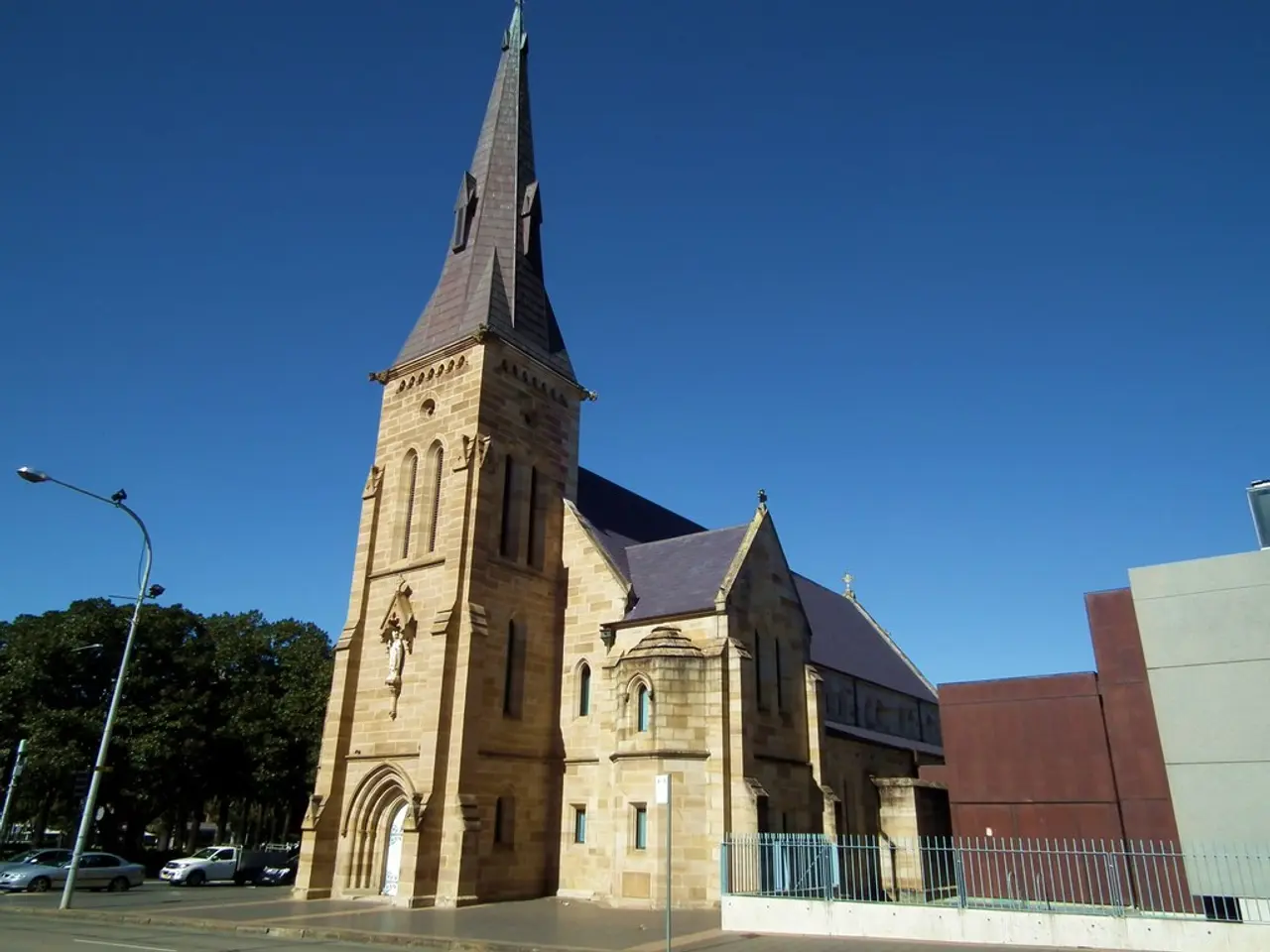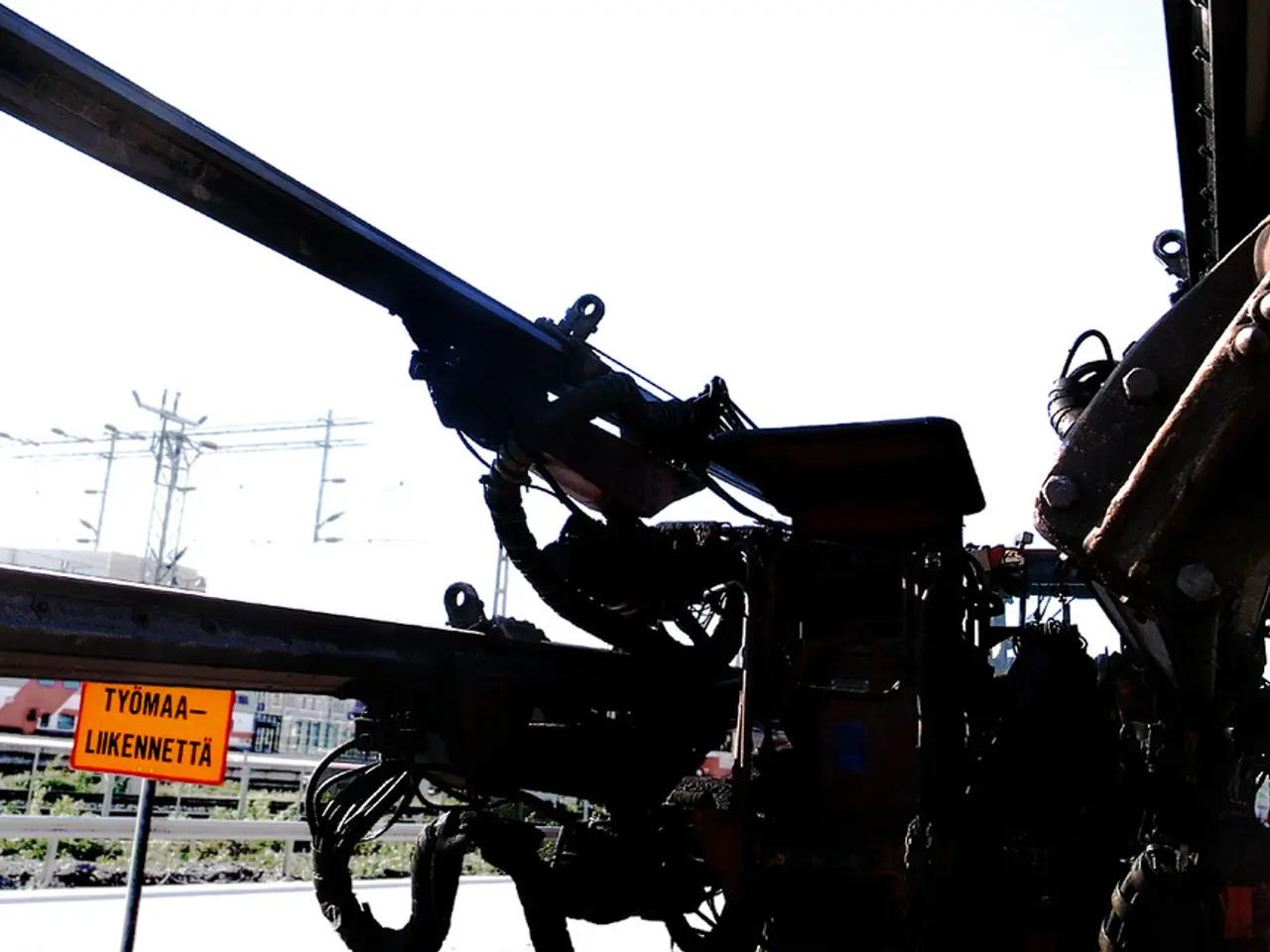MIT startup sets ambitious goals for capturing carbon from the atmosphere
In the fight against climate change, a new player is making waves in the carbon capture market. Noya, a startup founded by Josh Santos '14, is working tirelessly to accelerate direct-air carbon removal using a low-power, modular system [1].
Noya's innovative approach is based on a carbon capture material that consists of an activated carbon monolith and a proprietary chemical feedstock. This unique combination binds to the carbon in the air, making it possible for each Noya module, about the size of a solar panel, to remove approximately 60 tons of CO2 from the atmosphere per year [2].
The potential impact of Noya and similar direct air capture (DAC) startups is significant, as DAC technologies are increasingly recognized as critical tools for actively removing CO2 from the atmosphere to mitigate climate change. However, the DAC market is still in its infancy, facing challenges such as high energy demands, infrastructure limitations for CO2 transport and storage, and the need to power DAC with low-emission energy sources to maximize environmental benefit [1][3].
To tackle these challenges, Noya's strategy is twofold. First, by leveraging existing infrastructure, they aim to lower installation costs and speed deployment, potentially accelerating the deployment of carbon removal at scale. Second, they plan to power their system with renewable energy and build facilities near injection wells for carbon storage [6].
Noya's ambition is not new to Santos. His time at MIT, where he took coursework related to climate change and energy systems, majoring in chemical engineering and learning about startups through the MIT Sloan School of Management and the Undergraduate Research Opportunities Program (UROP), played a crucial role in shaping his vision [3].
The startup has already secured millions of dollars in presales from organizations including Shopify, Watershed, and a university endowment. Noya uses third-party auditors to verify the amount of carbon dioxide captured and sells carbon credits to help organizations reach net-zero emissions targets [5].
The first commercial-scale Noya facility, currently under construction, will have the capacity to pull about 3 million tons of carbon from the air each year [4]. The startup initially planned to attach carbon capture devices to cooling towers, but pivoted due to the Inflation Reduction Act requiring each system to capture at least 1,000 tons of CO2 per year [7].
Noya's first testing facility is set to launch in 2024, with a projected capacity of removing about 350 tons of CO2 per year. The startup aims to capture and remove thousands of tons of CO2 over the next few years [7].
Santos's drive to combat climate change was personally inspired. Having experienced the increasing intensity of hurricanes in his neighbourhood, which forced his family to evacuate and destroyed their church, he recognised the urgency of the issue [8].
Inspired by a four-day development workshop called LeaderShape at MIT to lead with integrity and use his privilege to improve the lives of others, Santos, along with friend Daniel Cavaro, founded Noya in the spring of 2020 [8].
As the race to combat climate change heats up, startups like Noya are contributing to the growing momentum within the climate-tech sector to develop practical carbon removal solutions. The United Nations has stated that to avoid the worst effects of climate change, both emissions reduction and carbon dioxide removal from the atmosphere are necessary [3]. With Noya's innovative approach and ambitious goals, the future of direct air carbon capture looks promising indeed.
- In the battle against climate change, the carbon capture market has a new contender, as startups like Noya are accelerating direct-air carbon removal using low-power, modular systems.
- The carbon capture material used by Noya is unique, consisting of an activated carbon monolith and a proprietary chemical feedstock, which binds to carbon in the air.
- Each Noya module, similar in size to a solar panel, can remove approximately 60 tons of CO2 from the atmosphere per year.
- Direct air capture (DAC) technologies, including Noya, are increasingly recognized as essential tools for actively removing CO2 from the atmosphere to mitigate climate change.
- Despite the significant potential impact, the DAC market is still developing, facing challenges such as high energy demands, infrastructure limitations for CO2 transport and storage, and the need for low-emission energy sources.
- To combat these challenges, Noya aims to lower installation costs and speed deployment by leveraging existing infrastructure, and plans to power their system with renewable energy and build facilities near injection wells for carbon storage.
- Noya's founder, Josh Santos, was inspired to combat climate change during his time at MIT, where he studied chemical engineering, learned about startups, and focused on climate change and energy systems.
- Noya has already secured significant funding from organizations such as Shopify, Watershed, and a university endowment, and uses third-party auditors to verify the amount of carbon dioxide captured and sells carbon credits to help organizations reach net-zero emissions targets.
- The first commercial-scale Noya facility, currently under construction, will have the capacity to pull about 3 million tons of carbon from the air each year.
- Noya's first testing facility is set to launch in 2024, with a projected capacity of removing about 350 tons of CO2 per year, and the startup aims to capture and remove thousands of tons of CO2 over the next few years.
- Santos's personal experience with the intensifying effects of hurricanes in his neighborhood, such as evacuations and the destruction of his church, underlines the urgency of addressing climate change and the need for innovative solutions like those offered by startups like Noya.



